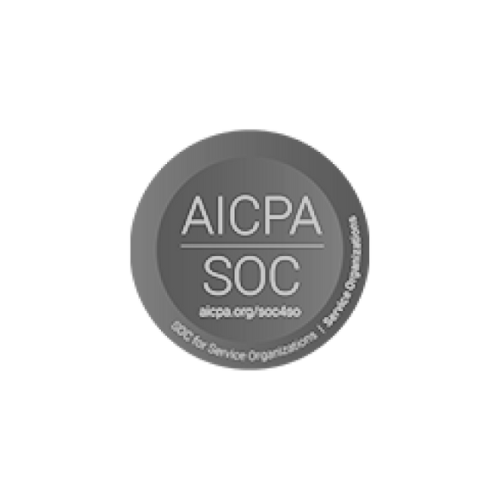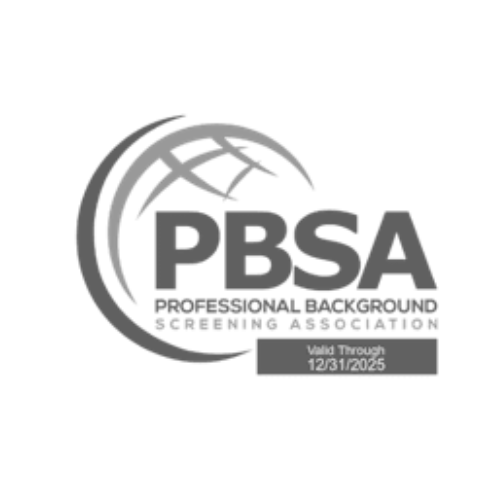The email arrived on a Tuesday morning with the subject line that every HR director dreads: “Urgent: Employee Investigation Required.” The message detailed how one of their remote software developers had been simultaneously working full-time for a direct competitor for the past eight months. Same hours, overlapping projects, access to confidential information from both companies.
The employee hadn’t lied during the hiring process. When they started the job, they were legitimately unemployed and available. But three weeks into their employment, they quietly accepted a second position with a competitor. For eight months, they collected two full salaries while potentially exposing both companies to significant intellectual property risks.
The traditional background check had been thorough and clean. Employment history verified, education confirmed, criminal record clear. But none of that mattered because the real risk emerged after the hiring decision, in the invisible space of remote work where traditional oversight mechanisms simply don’t function.
This is the remote work verification crisis that most organizations haven’t recognized yet. We’re using verification methods designed for in-office employment to manage distributed teams that operate in fundamentally different risk environments. The result is a growing gap between the risks we think we’re managing and the risks we’re actually exposed to.
When Distance Creates Dangerous Blind Spots
Remote work doesn’t just change where people work—it changes how risk manifests and evolves over time. In a traditional office environment, you might notice if someone seems distracted, takes unusual calls, or has scheduling conflicts that suggest outside commitments. These informal observation mechanisms provide early warning signs that something might be amiss.
Remote work eliminates most of these natural oversight opportunities. An employee working two jobs might appear perfectly productive in both roles, especially if they’re skilled at managing their time and deliverables. The warning signs that would be obvious in an office setting become invisible when mediated through video calls and digital communication.
I’ve seen cases where remote employees maintained excellent performance reviews while simultaneously working for competitors, consulting for clients in their spare time, or even running their own businesses during company hours. The traditional metrics we use to assess employee engagement and commitment—attendance, responsiveness, output quality—can all be maintained even when someone’s attention and loyalty are divided.
This creates a particularly insidious form of risk because the employees who are most capable of managing multiple commitments are often the most valuable and trusted team members. They’re not the obvious risk cases that traditional monitoring might catch. They’re the high performers who have earned autonomy and trust, making their divided loyalties even more dangerous when they’re discovered.
The Evolution of Employee Risk Profiles
Traditional background checks operate on the assumption that risk is relatively static. You verify someone’s background at the point of hire and assume that information remains relevant throughout their employment. This assumption was always somewhat flawed, but remote work has made it completely obsolete.
Remote employees face different pressures and opportunities than their in-office counterparts. Financial stress might lead to consulting work that creates conflicts of interest. Family obligations might result in caregiving responsibilities that affect availability. Geographic flexibility might enable lifestyle choices that impact job commitment.
More significantly, remote work has normalized the idea of multiple professional commitments in ways that traditional employment never did. The boundaries between full-time employment, consulting work, side projects, and entrepreneurial ventures have become increasingly blurred. What might have been clearly inappropriate in an office setting can seem like reasonable professional development in a remote context.
The challenge is that these evolving risk profiles are largely invisible to traditional verification and monitoring approaches. An employee might gradually transition from full-time commitment to divided attention without any obvious warning signs until a significant incident occurs.
The Compliance Implications of Invisible Risk
The legal and regulatory implications of remote work verification gaps are still emerging, but early indicators suggest they could be significant. Industries with strict confidentiality requirements, intellectual property concerns, or regulatory oversight are beginning to recognize that traditional verification approaches may not provide adequate protection in remote work environments.
Financial services companies are grappling with how to ensure that remote employees aren’t sharing confidential client information or trading on insider knowledge. Healthcare organizations are struggling to maintain HIPAA compliance when employees access patient data from home environments they don’t control. Technology companies are discovering that their most sensitive intellectual property might be accessible to employees who are simultaneously working for competitors.
The regulatory response is still developing, but some industries are beginning to implement enhanced verification requirements for remote workers. These might include periodic re-screening, ongoing monitoring of professional activities, or enhanced disclosure requirements for outside commitments.
Organizations that wait for regulatory requirements to emerge may find themselves scrambling to implement compliance measures after problems have already occurred. The companies that are proactively addressing remote work verification challenges are positioning themselves to avoid both regulatory penalties and competitive disadvantages.
Rethinking Verification for Distributed Teams
Effective remote work verification requires fundamentally different approaches than traditional background checks. Instead of focusing solely on historical information, organizations need systems that can detect and respond to evolving risk patterns in real-time.
This doesn’t mean implementing invasive surveillance or micromanagement systems that undermine the trust and autonomy that make remote work effective. Instead, it means developing verification approaches that are appropriate for the unique risk profile of distributed teams while respecting employee privacy and maintaining productive working relationships.
The most effective remote work verification programs combine enhanced initial screening with ongoing monitoring systems that can detect changes in employee circumstances or commitments. This might include periodic re-verification of employment status, monitoring of professional social media activity, or regular disclosure requirements for outside professional activities.
The key is developing systems that provide early warning of potential issues rather than waiting for problems to become serious enough to require investigation. Organizations that can identify and address conflicts of interest before they become compliance violations or competitive disadvantages will be much better positioned to manage remote work risks effectively.
Enhanced Screening for Remote Positions
Remote work verification should begin with enhanced screening processes that go beyond traditional background checks. This might include more comprehensive reference checks that specifically explore how candidates have managed remote work responsibilities in the past, verification of home office setups and security measures, or assessment of candidates’ ability to maintain professional boundaries in distributed work environments.
Social media screening becomes particularly important for remote positions because online professional activity often provides insights into outside commitments, consulting work, or entrepreneurial ventures that might not be disclosed through traditional application processes. However, this screening must be conducted carefully to avoid privacy violations or discriminatory practices.
Geographic verification takes on new importance when employees might be working from locations that create tax, legal, or security complications. An employee who claims to be working from one state but is actually located in another might create compliance issues that traditional verification wouldn’t detect.
Technology verification becomes critical when employees are accessing company systems and data from personal devices and home networks. This might include assessment of cybersecurity practices, verification of internet connectivity and reliability, or evaluation of physical security measures in home office environments.
Ongoing Monitoring Without Micromanagement
The challenge of ongoing remote work verification is maintaining appropriate oversight without creating oppressive monitoring systems that undermine employee trust and productivity. The goal is to detect significant changes in employee circumstances or commitments, not to track every minute of their working day.
Effective ongoing monitoring often focuses on outcome-based metrics rather than activity-based surveillance. Changes in productivity patterns, communication frequency, or project engagement might indicate evolving commitments or circumstances that warrant further investigation. However, these metrics must be interpreted carefully to avoid penalizing employees for legitimate variations in work style or personal circumstances.
Periodic disclosure requirements can provide a systematic way to identify potential conflicts of interest or outside commitments without requiring invasive monitoring. Employees might be asked to annually disclose consulting work, board positions, investment activities, or other professional commitments that could create conflicts with their primary employment.
Professional social media monitoring can provide insights into employees’ outside activities and commitments, but this monitoring must be conducted within appropriate legal and ethical boundaries. The focus should be on identifying potential conflicts of interest or compliance issues, not on general surveillance of employee activities.
Technology Solutions for Remote Verification
Modern technology offers numerous tools for enhancing remote work verification while maintaining employee privacy and trust. Identity verification systems can ensure that the person accessing company systems is actually the authorized employee. Time tracking and productivity monitoring tools can provide insights into work patterns without requiring invasive surveillance.
Automated monitoring systems can track changes in employee professional profiles, social media activity, or public records that might indicate new commitments or circumstances. These systems can provide alerts when significant changes occur, allowing organizations to address potential issues proactively rather than reactively.
However, technology solutions must be implemented carefully to avoid creating oppressive monitoring environments that undermine the benefits of remote work. The goal is to enhance verification and oversight capabilities, not to recreate the surveillance aspects of traditional office environments in digital form.
The most effective technology solutions are those that provide valuable insights while remaining largely invisible to employees who are meeting their commitments and maintaining appropriate professional boundaries. Employees should feel trusted and autonomous while organizations maintain appropriate oversight and risk management capabilities.
Building Trust Through Transparency
Effective remote work verification requires clear communication about expectations, monitoring practices, and the rationale behind verification requirements. Employees who understand why certain verification measures are necessary and how they protect both the organization and individual team members are more likely to support and comply with these requirements.
Transparency about monitoring practices helps build trust by ensuring that employees understand what information is being collected, how it’s being used, and what privacy protections are in place. This transparency also helps organizations avoid legal issues related to employee privacy and surveillance.
Clear policies about outside commitments, conflicts of interest, and disclosure requirements help employees understand what activities are acceptable and what might create problems. These policies should be specific enough to provide useful guidance while flexible enough to accommodate the diverse circumstances that remote employees might face.
Regular communication about verification practices and their outcomes helps reinforce their importance and effectiveness. When employees see that verification measures are helping protect the organization and their colleagues, they’re more likely to view these practices as valuable rather than intrusive.
Industry-Specific Remote Work Risks
Different industries face unique remote work verification challenges that require specialized approaches. Healthcare organizations must ensure that remote employees maintain HIPAA compliance when accessing patient data from home environments. Financial services companies need to verify that remote employees aren’t engaging in unauthorized trading or sharing confidential client information.
Technology companies face particular challenges related to intellectual property protection and competitive intelligence. Remote employees might have access to sensitive technical information that could be valuable to competitors, and traditional oversight mechanisms may not be sufficient to detect unauthorized sharing or dual employment situations.
Government contractors and organizations with security clearance requirements face additional verification challenges when employees work remotely. Traditional security measures that rely on physical access controls and in-person oversight may need to be supplemented with enhanced remote monitoring and verification systems.
Educational institutions must ensure that remote employees maintain appropriate boundaries with students and comply with various regulatory requirements related to student privacy and safety. The informal oversight that occurs naturally in campus environments may need to be replaced with more formal verification and monitoring systems.
The Cost of Inadequate Remote Verification
Organizations that fail to adapt their verification practices to remote work realities face significant potential costs. Intellectual property theft, regulatory violations, and competitive disadvantages can all result from inadequate oversight of remote employees.
The financial costs of remote work verification failures can be substantial. Legal fees, regulatory penalties, competitive losses, and remediation expenses can quickly exceed the cost of implementing appropriate verification systems. Moreover, the reputational damage from high-profile verification failures can have long-lasting impacts on an organization’s ability to attract talent and maintain client relationships.
The operational costs of verification failures often extend beyond immediate financial impacts. Discovering that a remote employee has been working for a competitor might require extensive investigation to determine what information was compromised, what competitive advantages were lost, and what remedial actions are necessary.
The human costs of verification failures can be equally significant. When trust is violated, it often affects the entire remote work culture, leading to increased monitoring, reduced autonomy, and decreased job satisfaction for all employees.
Building Competitive Advantage Through Effective Verification
Organizations that develop effective remote work verification capabilities can gain significant competitive advantages. They can hire and retain top talent while maintaining appropriate risk management and compliance standards. They can offer the flexibility and autonomy that make remote work attractive while providing the oversight and security that protect organizational interests.
Effective remote work verification also enables organizations to expand their talent pools geographically without proportionally increasing their risk exposure. Companies that can confidently hire and manage remote employees from diverse locations have access to broader talent markets and can often attract higher-quality candidates.
The ability to manage remote work risks effectively also provides competitive advantages in client relationships and business development. Organizations that can demonstrate robust remote work governance and verification capabilities are often preferred partners for clients who have their own remote work security concerns.
Preparing for the Future of Remote Work
Remote work is not a temporary pandemic response—it’s a permanent shift in how many organizations operate. The verification challenges we’re seeing today will only become more complex as remote work becomes more prevalent and sophisticated.
Organizations that invest in developing robust remote work verification capabilities now will be better positioned to adapt to future challenges and opportunities. They’ll have the systems, processes, and expertise necessary to manage evolving risks while maintaining the flexibility and efficiency that make remote work valuable.
The future of remote work verification will likely include more sophisticated technology solutions, enhanced regulatory requirements, and evolving best practices based on lessons learned from early adopters. Organizations that are proactive in developing their capabilities will be better prepared for these changes than those that wait for problems to emerge.
The question isn’t whether remote work will continue to grow—it will. The question is whether your organization will develop the verification capabilities necessary to manage remote work risks effectively while maintaining the trust and autonomy that make distributed teams successful.
The time to address the remote work verification crisis is now, before it becomes a crisis for your organization. The companies that recognize and respond to these challenges proactively will build stronger, more resilient remote work capabilities that provide competitive advantages for years to come.
About the Author: Sachin Aggarwal is a thought leader in background verification and HR compliance. He helps organizations develop verification systems that address the unique challenges of remote and distributed work environments.
Ready to strengthen your remote work verification? Contact AMS Inform for guidance on developing verification processes that protect your organization while supporting effective remote work practices.
















